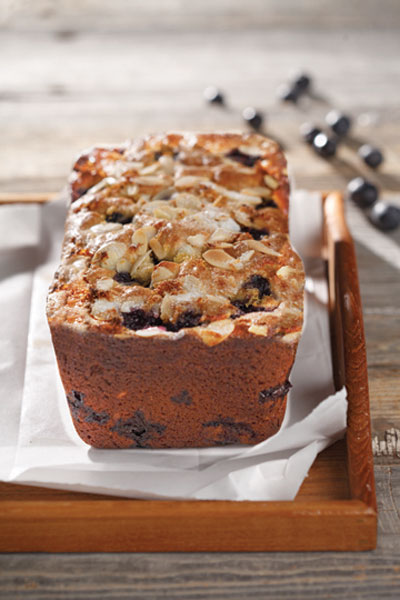
The Final Proof: May 2011
May 2, 2011
By Jane Dummer RD
What are pulses?” is a regular question at my workplace wellness healthy eating seminars. I respond, “Pulses include beans, peas, lentils and chickpeas.” And then the feedback is usually, “Ahh, you mean legumes!” Well, no, not exactly, but you’re on the right track. The Alberta Pulse Growers website defines them as “the edible seeds of legumes, like lentils, beans, peas and chickpeas. Whole pulses, pulse flours and fractions are becoming more popular with the Canadian consumer. Hummus (ground chickpeas) is now an everyday food in many homes, not just an exotic dip served with pita bread found only at the local Lebanese restaurant. Lentil crackers are available on many mainstream grocery store shelves. As international flavour trends continue to spread throughout the North American marketplace, there are numerous opportunities and applications for pulses in the baking industry.
What are pulses?” is a regular question at my workplace wellness healthy eating seminars. I respond, “Pulses include beans, peas, lentils and chickpeas.” And then the feedback is usually, “Ahh, you mean legumes!” Well, no, not exactly, but you’re on the right track. The Alberta Pulse Growers website defines them as “the edible seeds of legumes, like lentils, beans, peas and chickpeas. Whole pulses, pulse flours and fractions are becoming more popular with the Canadian consumer. Hummus (ground chickpeas) is now an everyday food in many homes, not just an exotic dip served with pita bread found only at the local Lebanese restaurant. Lentil crackers are available on many mainstream grocery store shelves. As international flavour trends continue to spread throughout the North American marketplace, there are numerous opportunities and applications for pulses in the baking industry.

|
|
| The carbohydrates found in pulses are digested more slowly than those in other foods, lowering the product’s glycemic index.
|
The impressive nutritional profile of pulses plays an important role in optimizing health. Pulses are a good source of slowly digestible carbohydrates, fibre and vegetable protein. They provide satiety and lower the glycemic index (GI) of the meal. Recent studies have shown that consuming just half a cup of pulses per day can lower an individual’s low-density lipoprotein (LDL, or “bad”) cholesterol level. Including pulses in the diet can also play an integral part in chronic disease prevention and management (specifically, type 2 diabetes and heart disease).
Mark Pickard, president of InfraReady Products in Saskatoon, has an American client that manufactures a salsa bread using black bean flour and sundried tomato flakes. This is a great example of how to mix two good-for-you ingredients to create a very popular item for consumers. Pickard notes that Mexicans have been using black bean flour to give tortillas a great earthy flavour, interesting colour and the bonus of health benefits for many years.
“We are now seeing this application in Canada and the USA,” he explains. “There is an increased use of chickpea flour with his client base, for example, in snack foods such as crackers. Chickpeas give a delicious nutty flavour, while remaining colour neutral for enhanced applications. Whereas, white bean flours are very neutral in taste and colour, lending to many applications in the baking industry.”
Tanya Der, manager of Food Innovation & Marketing at Pulse Canada, agrees. “Using 25 per cent white bean flour with other flours in an original recipe will not alter the flavour, aroma, texture or colour of the end product. However, it will optimize the nutritional aspects of that product. Red lentil flour is being used to give items such as tortilla a very appealing colour.” Der explains, “The use of chickpea flour as an ingredient to create roti bread, the traditional Caribbean flat bread for scooping up spicy dips, usually made from other pulses, and curried stews is becoming more common in Canada. The roti can be stuffed with sweetened lentil or spiced chickpeas and mango fillings. These are very popular vegetarian, Caribbean dishes.”
The folks at Pulse Canada have observed an increased consumer interest in baking with pulses, specifically in the gluten-free segment. Pulse purees are easily made by placing pulses (lentils or beans are recommended) and hot water in a food processor to give a gluten-free, moisture rich consistency to recipes such as the pumpernickel bread found in the new cook booklet Pulses and the gluten-free diet: cooking with beans, peas, lentils and chickpeas.
Der suggests that the industry needs a better understanding of how the physical, compositional and functional properties of pulse flour influence the end product quality of baked goods. This has led to the initiation of the Canadian International Grains Institute’s (CIGI) Pulse Flour Milling and Utilization Project in Winnipeg. This four-year initiative, which launched last year, is funded through Agriculture and Agri-Food Canada’s Canadian Agricultural Adaptation Program (CAAP), the Saskatchewan Pulse Growers, the Alberta Pulse Growers, and the Canadian Special Crops Association. One major component of the project involves collaborations with food manufacturers to optimize pulse flours for their specific end-use applications across the entire food industry.
To benefit from the numerous nutritional features of pulses, we, as a population, need to consume them, either as a whole food in every day eating or as ingredients – such as flours and fractions – in other food products such as tortillas, crackers, pitas and breads. There are lots of local and international opportunities and innovations to keep an eye on for bakeries and ingredient companies experimenting with this superfood.
Jane Dummer, RD, is a leading dietitian for the Canadian food and nutrition industry. Jane offers services specializing in agri-food, functional foods and food safety. For more information, visit www.janedummer.com.
Print this page
Leave a Reply